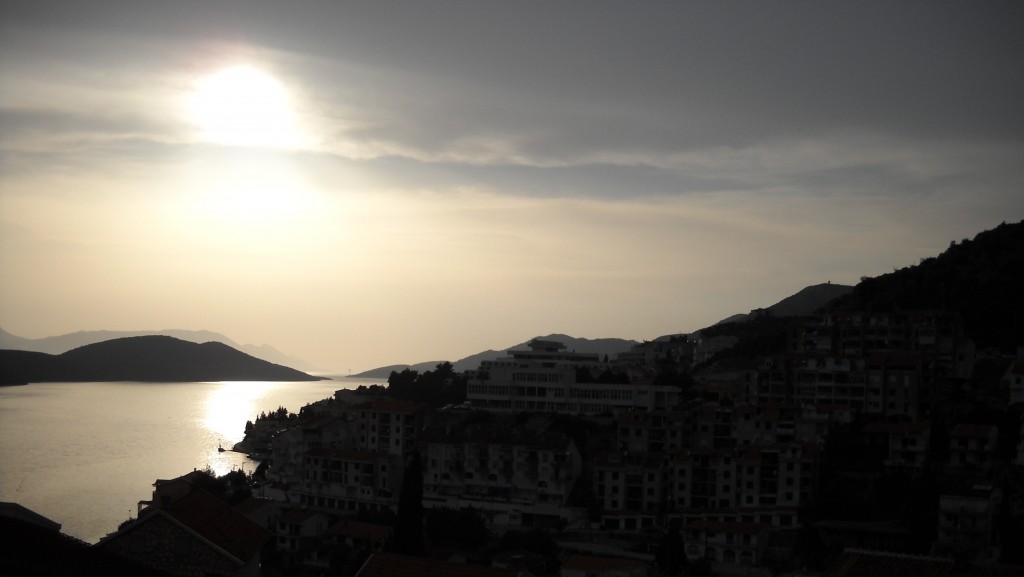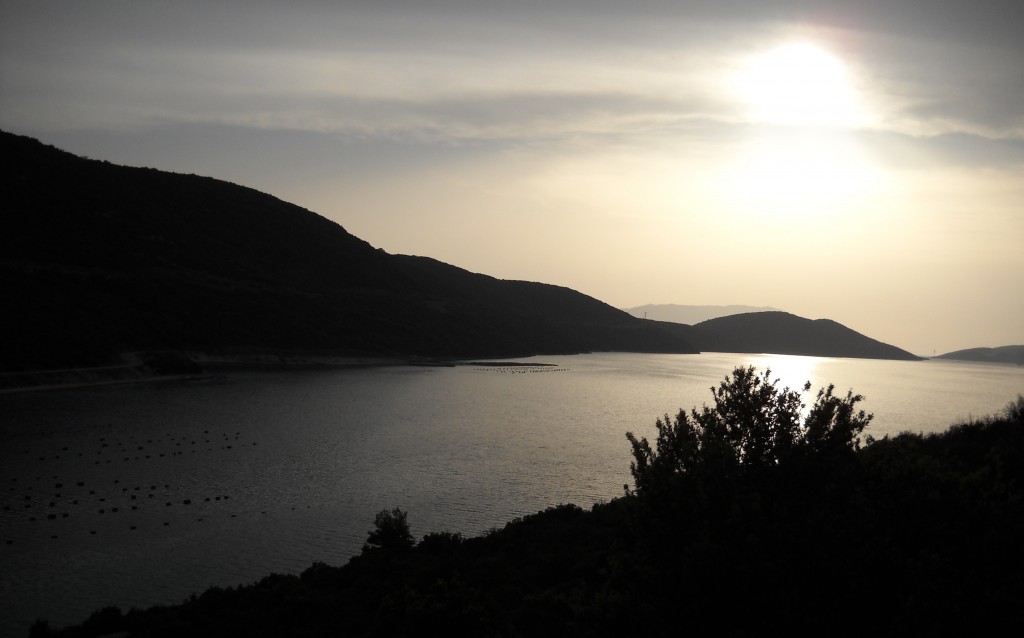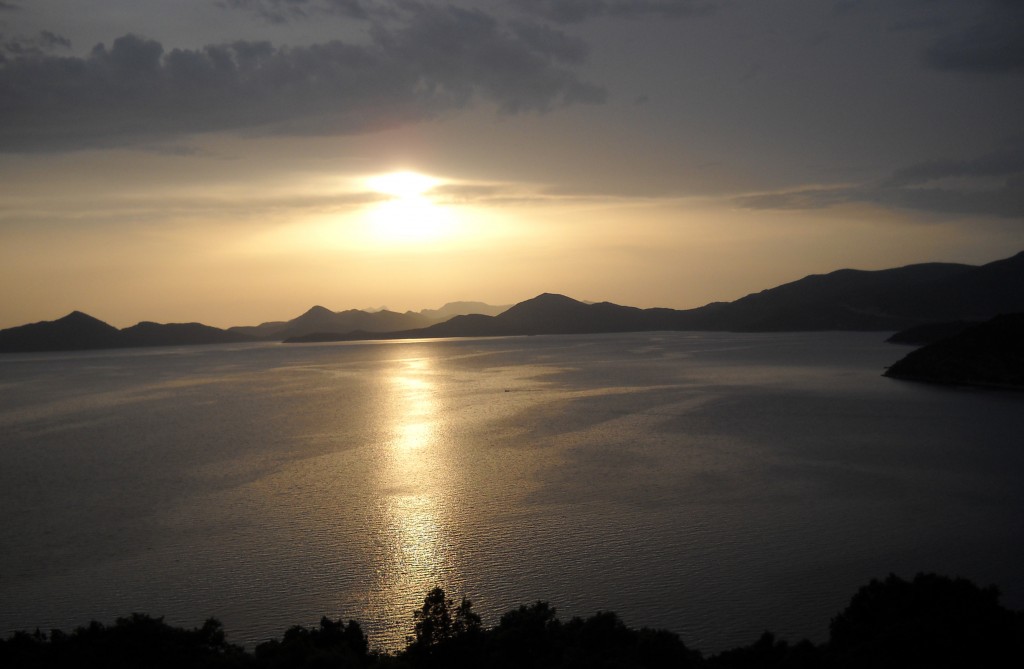
by Krista | Aug 24, 2010 | Gulliver Tuesday
For centuries Dubrovnik was an affluent and powerful place, her coffers filled with the wealth of her prosperous sea faring trade.
Alas, after the devastating earthquake of 1667, the mighty Republic of Dubrovnik began to decline.
1n 1669 it sold two patches of land to the Ottomans as insurance against advancing Venetian forces. Today those patches belong to Bosnia-Herzegovina and are the only points of contact that country has with the Adriatic.
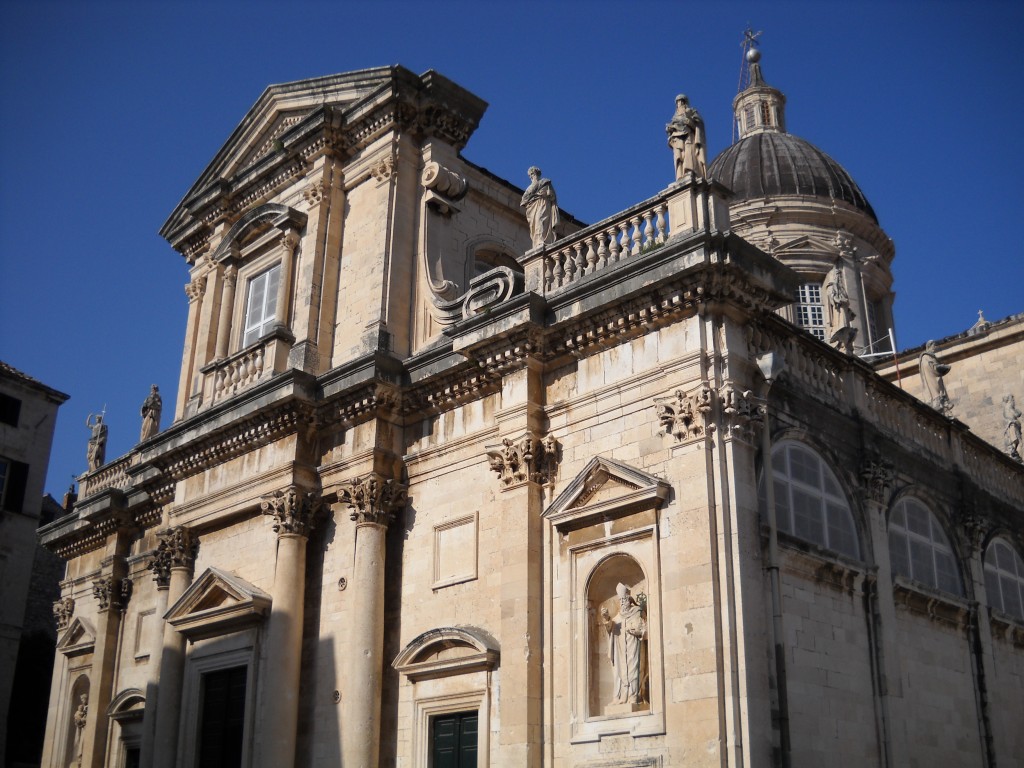
In the early 1800’s Russian-Montenegrin fleets besieged Dubrovnik, lobbing over 3000 cannonballs in the process. In 1806 Dubrovnik surrendered to Napoleon’s forces with the understanding that they simply needed free passage and weren’t interested in occupation. Sadly this was not the case. The French blockaded the harbor and soon Dubrovnik’s streets were filled with French soldiers.
On this day all flags and coats of arms above the city walls were painted black as a sign of mourning.
By 1808 the Republic was abolished, its land and people absorbed into Napoleon’s Kingdom of Italy.
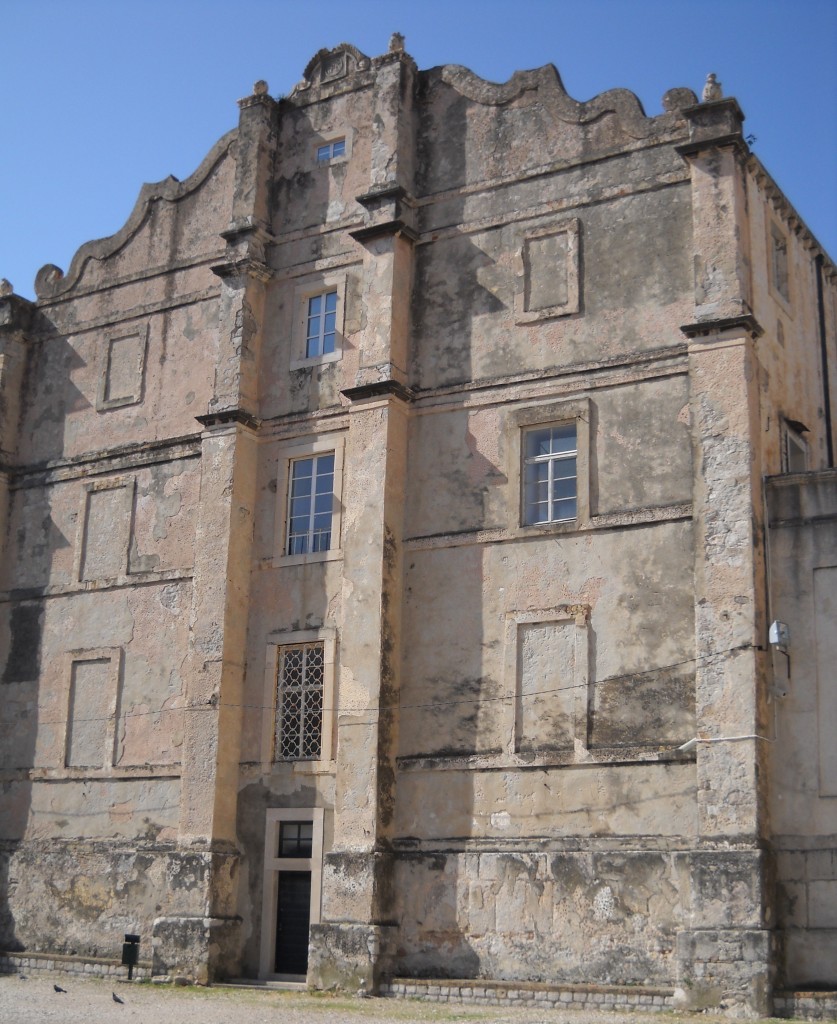
Thankfully that’s not the end of the story. Before too long a certain group of Austrians arrived on the scene and things really started to get interesting.
In the meantime, I’m digging into a fabulous Croatian salad from Sopovo. It is like a milder, spicier Greek salad with tomatoes, green pepper, hot peppers, and feta cheese. The white wine vinaigrette is savory and light and sets off the fresh vegetables beautifully.
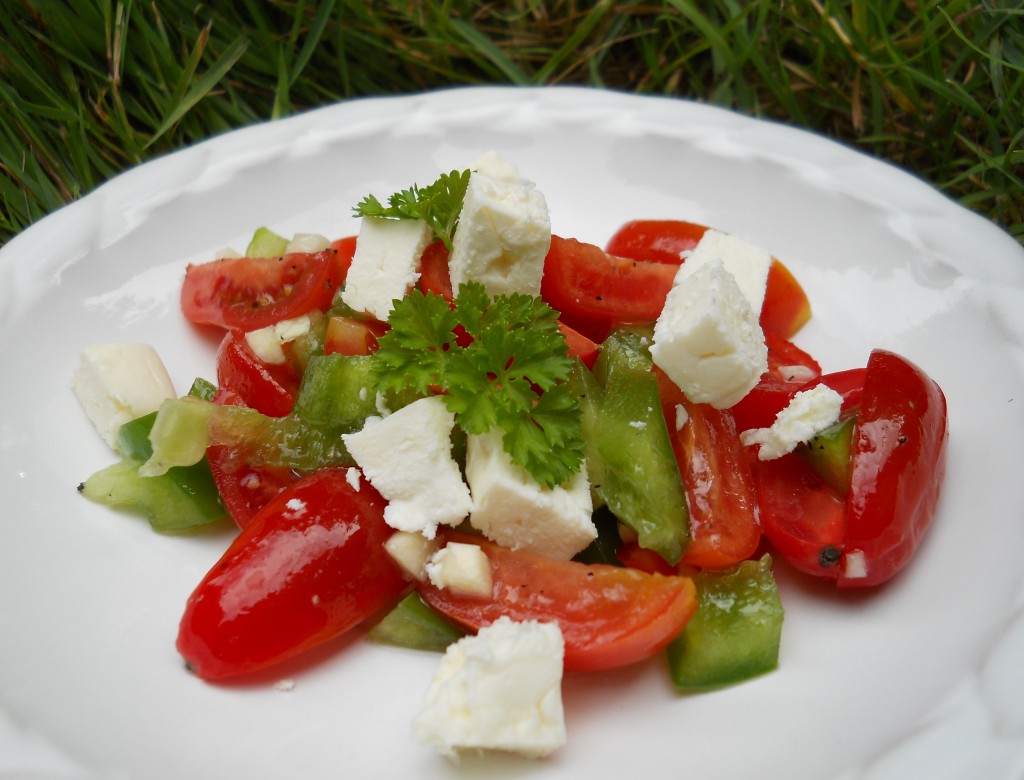
This is my contribution to Wanderfood Wednesday. Click here to see more dishes from around the world.
Sopovo Salad
Ingredients:
1 cup cherry or grape tomatoes, halved
1/2 Hot green pepper, minced
1/2 Green peppers, diced
2 Tbsp White wine vinegar
1 Garlic clove, minced
1 Tbsp Olive oil
1/4 tsp Salt
1/4 cup Feta, cubed
Parsley
Directions:
- Place tomatoes, peppers and green peppers in large bowl.
- In small bowl whisk together oil, vinegar, salt and garlic. Pour over vegetables and toss gently to coat.
- Top with feta and parsley.

by Krista | Aug 17, 2010 | Spring
For ages the citizens of Dubrovnik believed their fair city was founded in the 7th century by Dalmatian refugees escaping from a Serb attack. But recent archaeological findings suggest that perhaps it was started by Greek sailors, who used the ideally placed spot as a watering hole on their travels between Budva and Korčula.
Whoever those early settlers were, they did a humdinger of a job. Dubrovnik is one of the most beautiful cities I have ever seen.
Originally known as Ragusa, Dubrovnik is perched on the brilliantly blue Adriatic. Thick stone walls encircle it, once providing protection from marauding Arabs, Venetians, Macedonians, and Serbs. Inside the walls are a dizzying array of opulent churches, stately homes, and narrow stone streets that branch off into dark passageways like a waterless Venice.
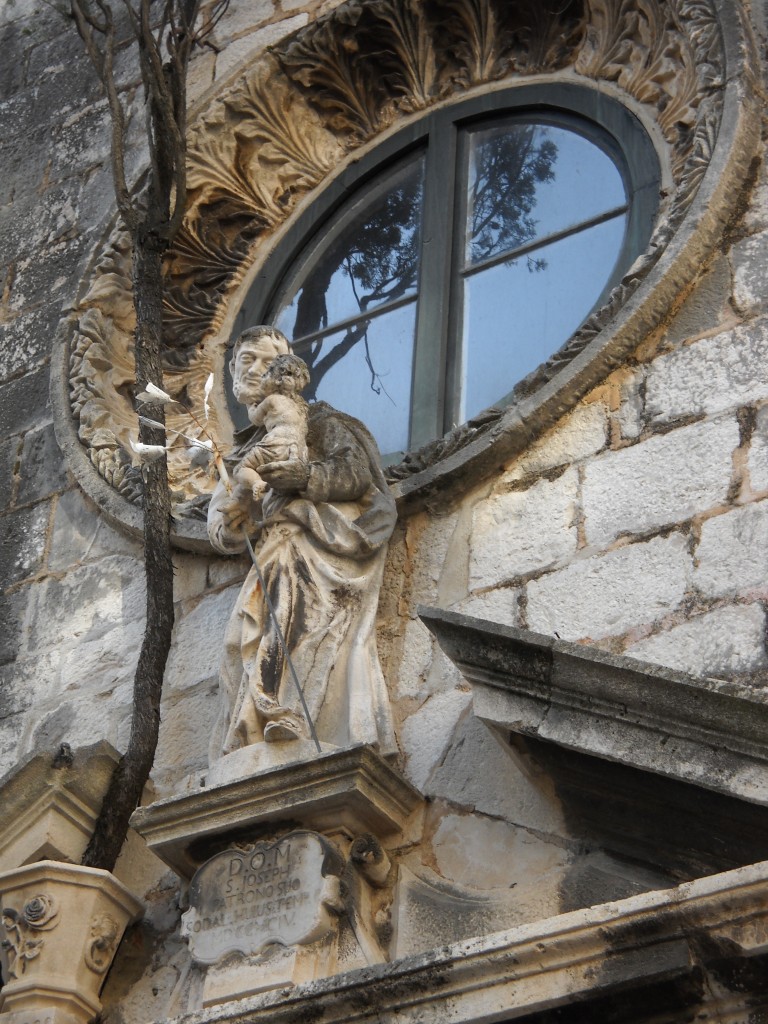
The settlement of Dubrovnik developed into a thriving Republic that rivaled mighty Venice for control of the Adriatic waterways and trade with the Near East. Through canny diplomacy and the vast wealth at its disposal, it became a powerful and influential society.
It established many institutions and laws that are remarkably modern in scope. Medical service was introduced in 1301 and the first pharmacy (still operating) was opened in 1317. It also provided a refuge for the elderly (1347), a quarantine hospital (1377) and an orphanage in (1432). Slave trading was abolished in 1418 and in 1436 a 20 kilometer water supply system was constructed.
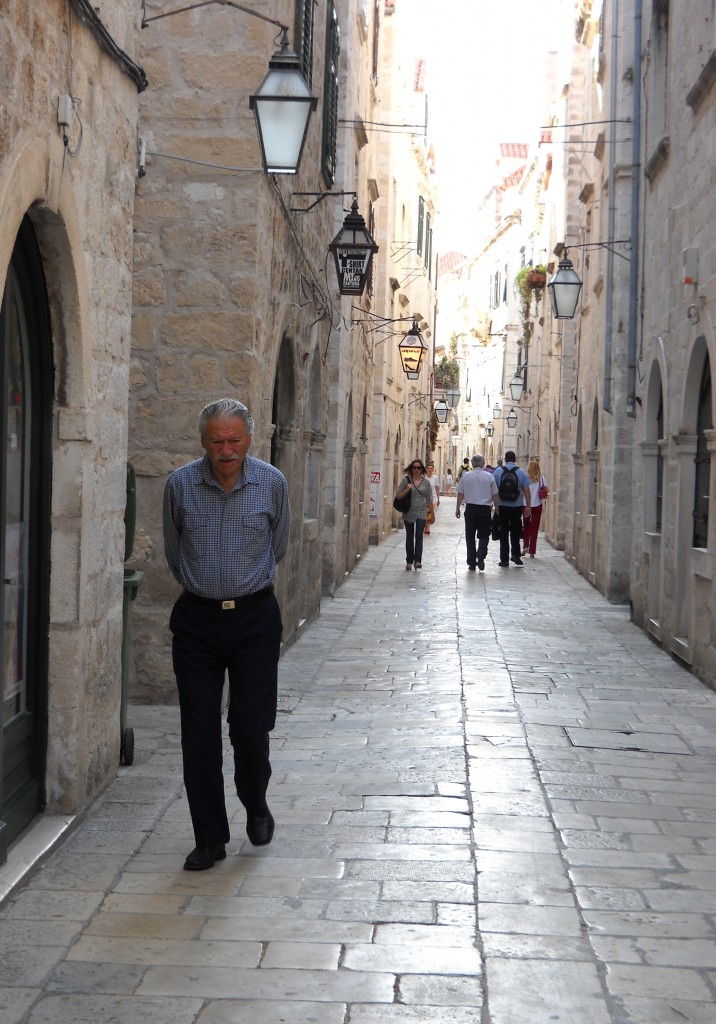
Alas, in 1667 Dubrovnik was devastated by a catastrophic earthquake that killed over 5000 people and leveled every major building. Only the Sponza Palace and Rector’s Palace survived. It was the beginning of Dubrovnik’s decline.
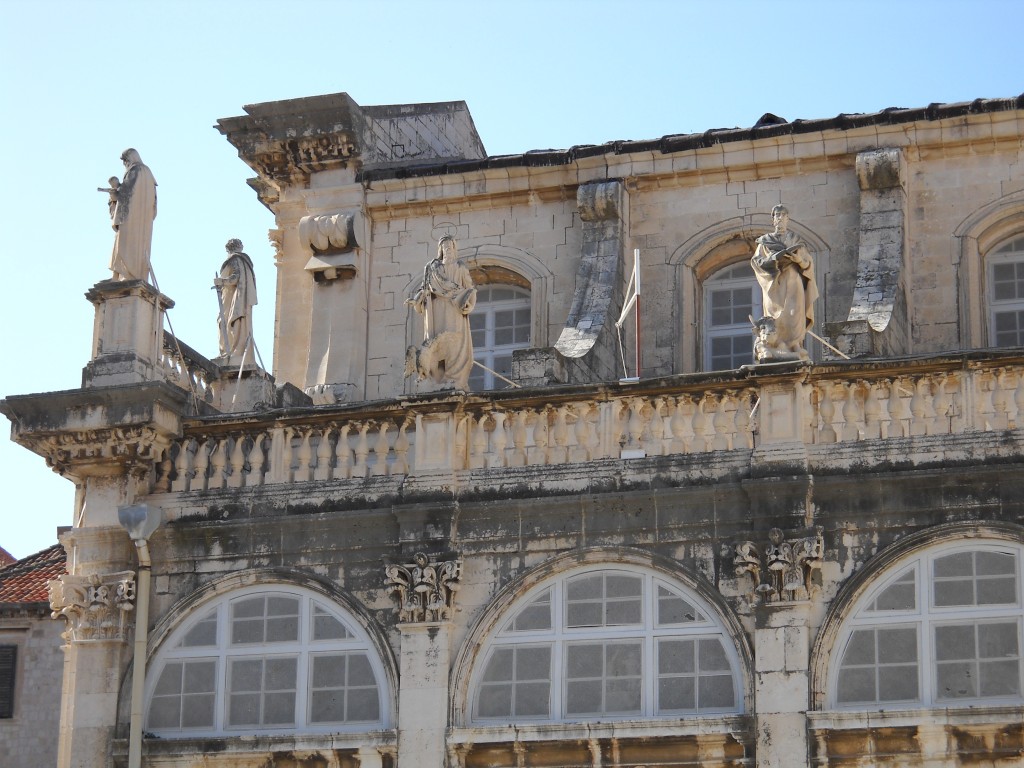
In homage to this fascinating city, I made Croatian Chicken Moskva, a delectably creamy dish that reminds me of a chicken version of Beef Stroganoff. I browned the chicken then set it aside, added sliced green onions to the pan juices, then tomatoes, fresh thyme, parsley, salt and pepper. When everything is soft I stirred in sour cream mixed with flour and paprika. A few minutes of cooking turned it into a thick savory sauce to pour over the chicken. Mmm. Delectably comforting.
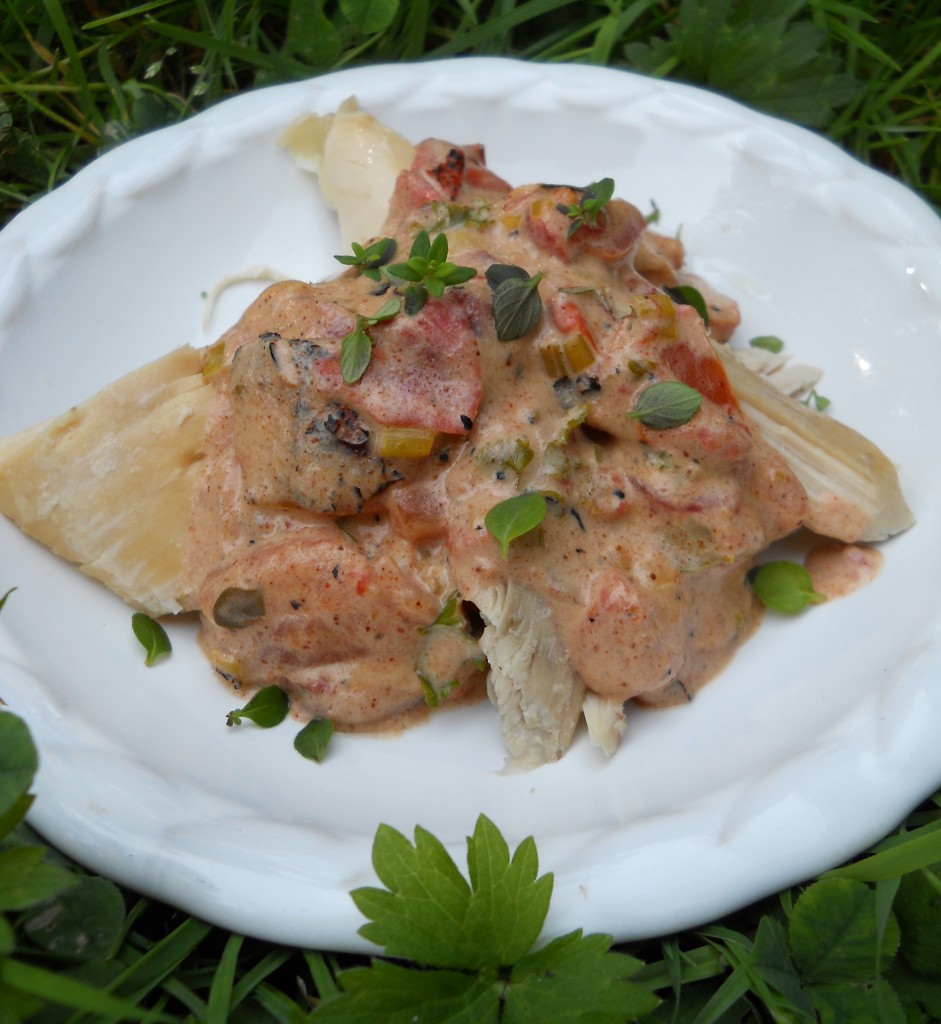
This is my contribution to Wanderfood Wednesday. Click here to view more recipes from around the world.
Croatian Chicken Moskva
Ingredients:
2 chicken breasts, thawed
1/4 cup butter
1/4 cup chicken broth
4 green onions, thinly sliced
1 tomato, diced (or half a can fire-roasted diced tomatoes)
1 Tbsp chopped fresh parsley
1 Tbsp chopped fresh thyme
salt and pepper to taste
1/2 cup sour cream
1 tsp whole wheat flour
1/2 tsp paprika
Directions:
- Divide each breast in two. Fry in melted butter until nicely browned.
- Add chicken broth, cover and simmer 20 minutes until cooked through. Remove from pan and keep warm.
- Add green onion to pan juices and cook for 3-4 minutes until soft. Add tomato and cook until mushy.
- Add parsley and thyme, salt and pepper, simmer 1-2 minutes.
- In small bowl mix sour cream, flour and paprika. Add to pan and stir to mix well. Cook 2-4 minutes or until thick.
- Place chicken on platter, spoon sauce over, sprinkle with fresh parsley or thyme and serve.

by Krista | Aug 10, 2010 | Spring
I love exploring a city when it’s first waking up, as the early rays of sun skim the roof tops, long before the crowds of people arrive.
I like being among the first ones through the gates, standing alone in a cavernous courtyard, gazing up at the thick stone walls and shuttered windows, wondering about the history and lives of the people who call this place home.
I especially love it in a city like Dubrovnik, Croatia.
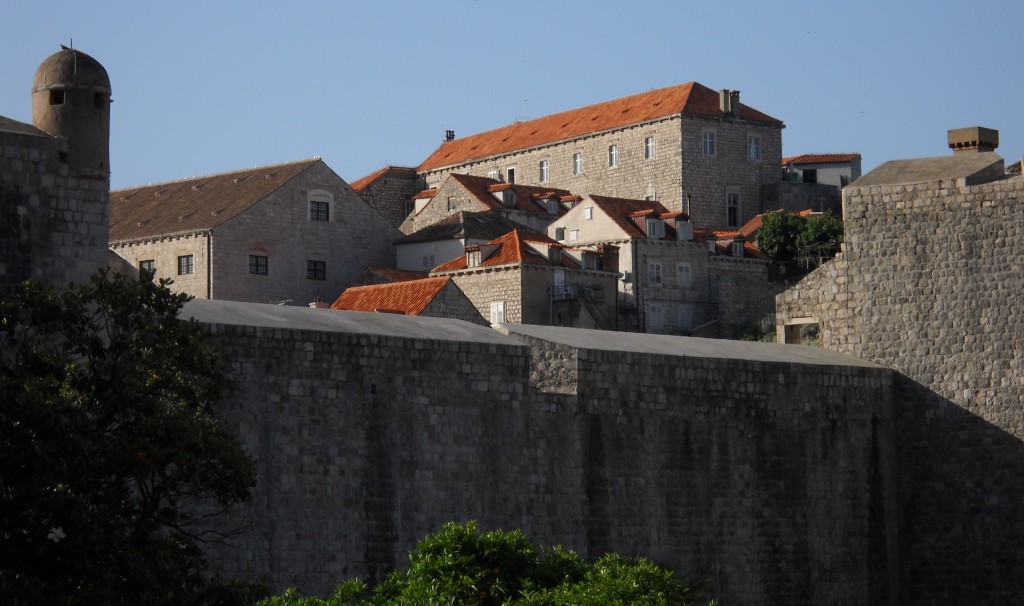
I will tell you more about Dubrovnik in the weeks to come, about her grand history, tragic stories, and the undeniable beauty that has earned her the name: The Pearl of the Adriatic.
But today I’m delighting in her simple moments, the ones that disappear with the first rush of tourists spilling out of buses and cars.
The worker washing his hands at an opulent stone fountain.
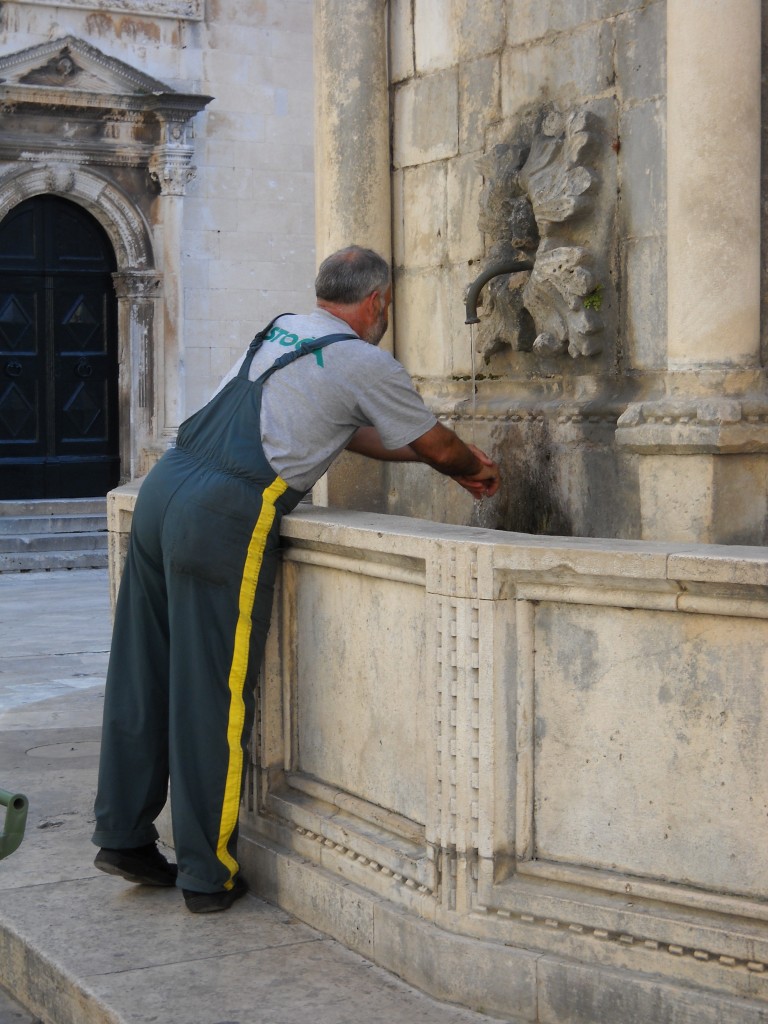
A vendor hastening to set up his booth in the cool of the morning.
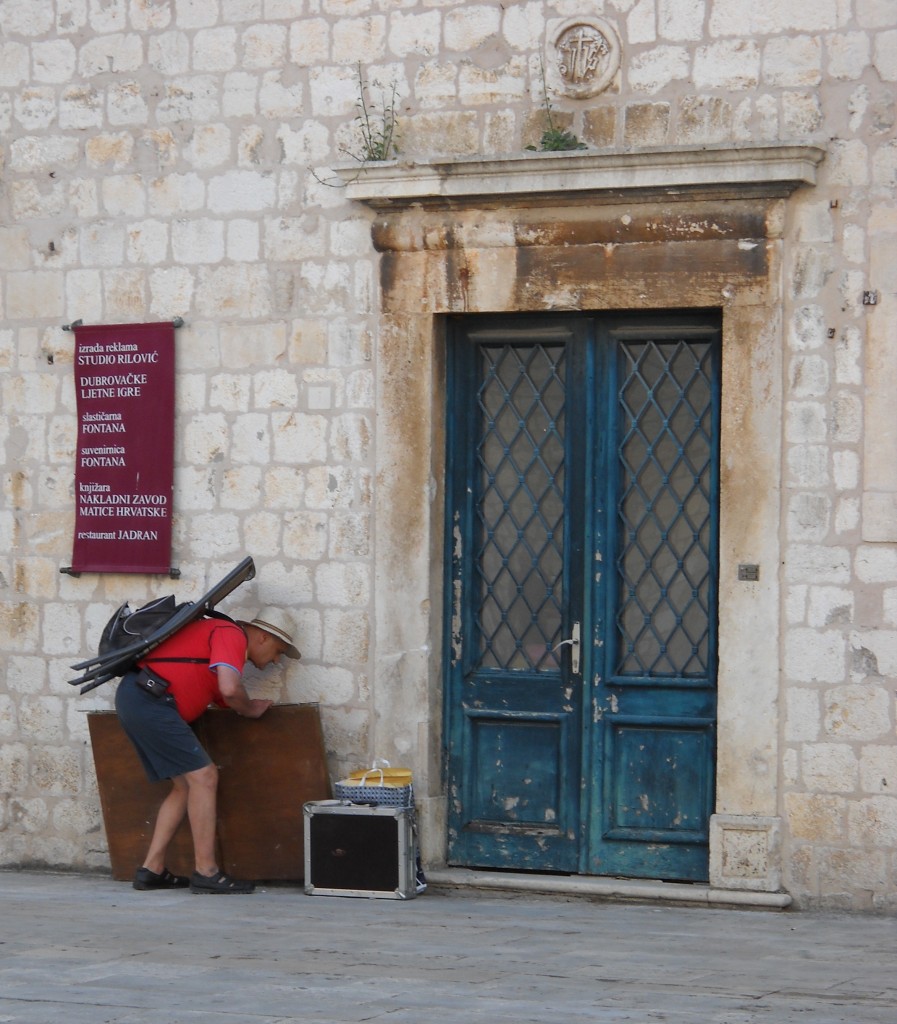
And a simple stew of vegetables in a rich, paprika broth.
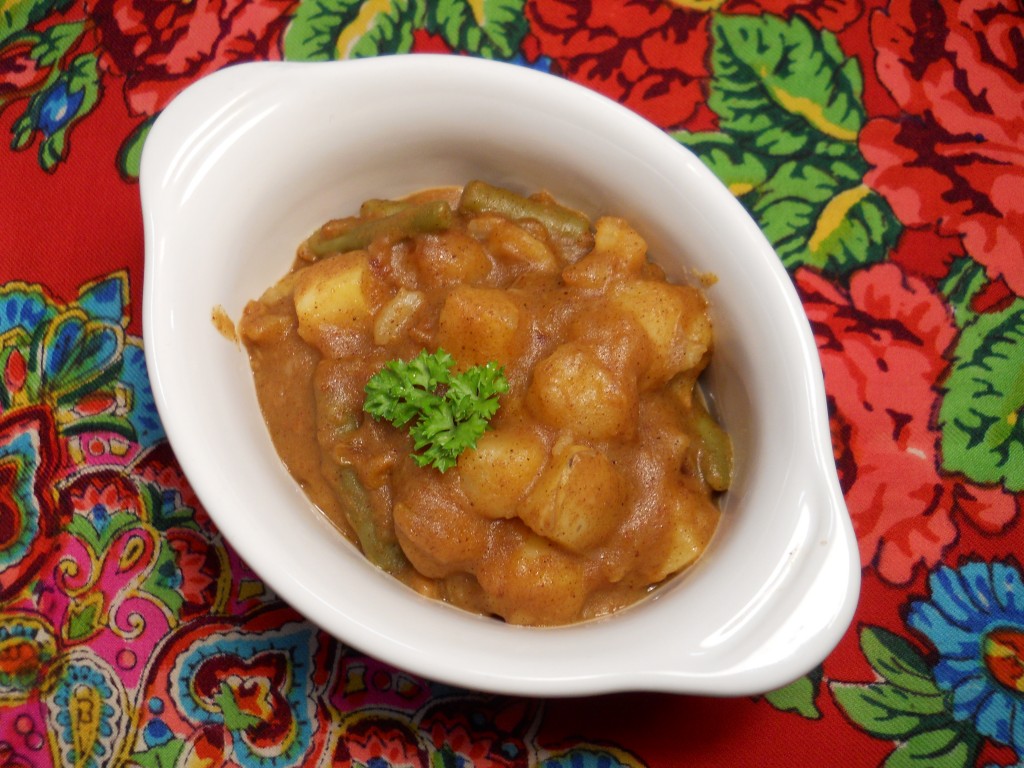
What is your favorite time of day to visit a new city?
This is my contribution to Wanderfood Wednesday at Wanderlust and Lipstick.
Croatian Zafrig
(Adapted from St. Anothony Croatian Catholic Church)
Ingredients:
1/4 cup bacon grease
1/4 olive oil
1 medium yellow onion, diced
1/3 cup flour
1 Tbsp Hungarian paprika
Directions:
- In saucepan heat bacon grease and oil, add onion and cook until transparent.
- Add flour and stir until flour is dark brown.
- Add paprika and stir into paste.
- Remove from heat and set aside until ready to use.
Croatian Cuspajs
(From St. Anthony Croatian Catholic Church)
Ingredients:
1 head green cabbage, cubed
1 Green pepper, diced
Salt
2 cups cubed potatoes
1 recipe Zafrig
Directions:
- Add cabbage and green pepper to soup pot and cover with water. Salt to taste and bring to boil. Cook until tender.
- Add potatoes and cook until tender, 10-15 minutes.
- Do not drain.
- Add Zafrig and simmer for 10 minutes until mixture resembles stew.
- NOTE: I did not have cabbage or green pepper, so I made mine with potatoes and green beans. It was fabulous!

by Krista | Aug 3, 2010 | Spring
The sunshine was blindingly brilliant by the time we awoke our first morning in Croatia. I had slept like the dead after two weeks on the road, the sound of the waves on the nearby beach lulling me to a much-needed rest. After tending to my brother’s wounded hands and feet – souvenirs from his nighttime encounter with a sea urchin – we set off in the cool morning air, basking in the sea breezes billowing in off the Adriatic.
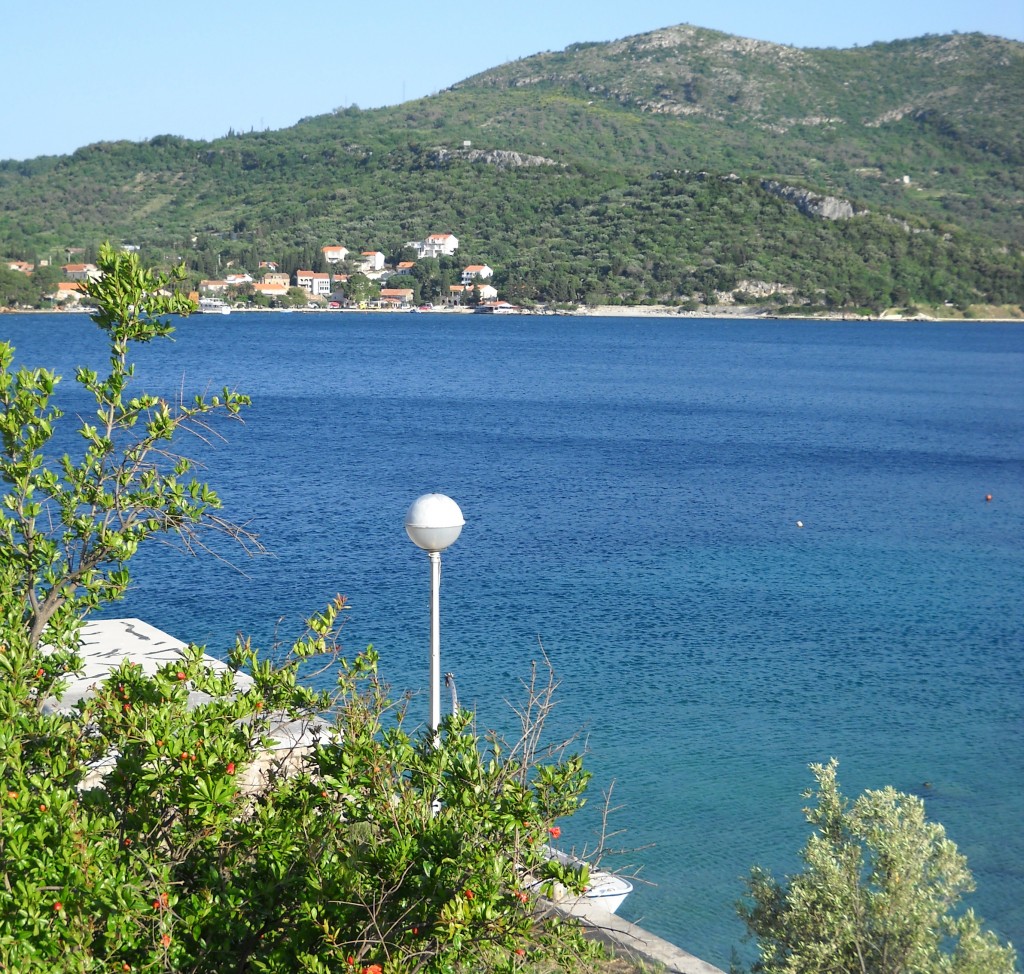
We rolled the windows down and let in the cold, salty air, delighting in the sunlight dancing across the waves, the cries of gulls near the fishing nets, and the promise of pastries and coffee awaiting us in town.
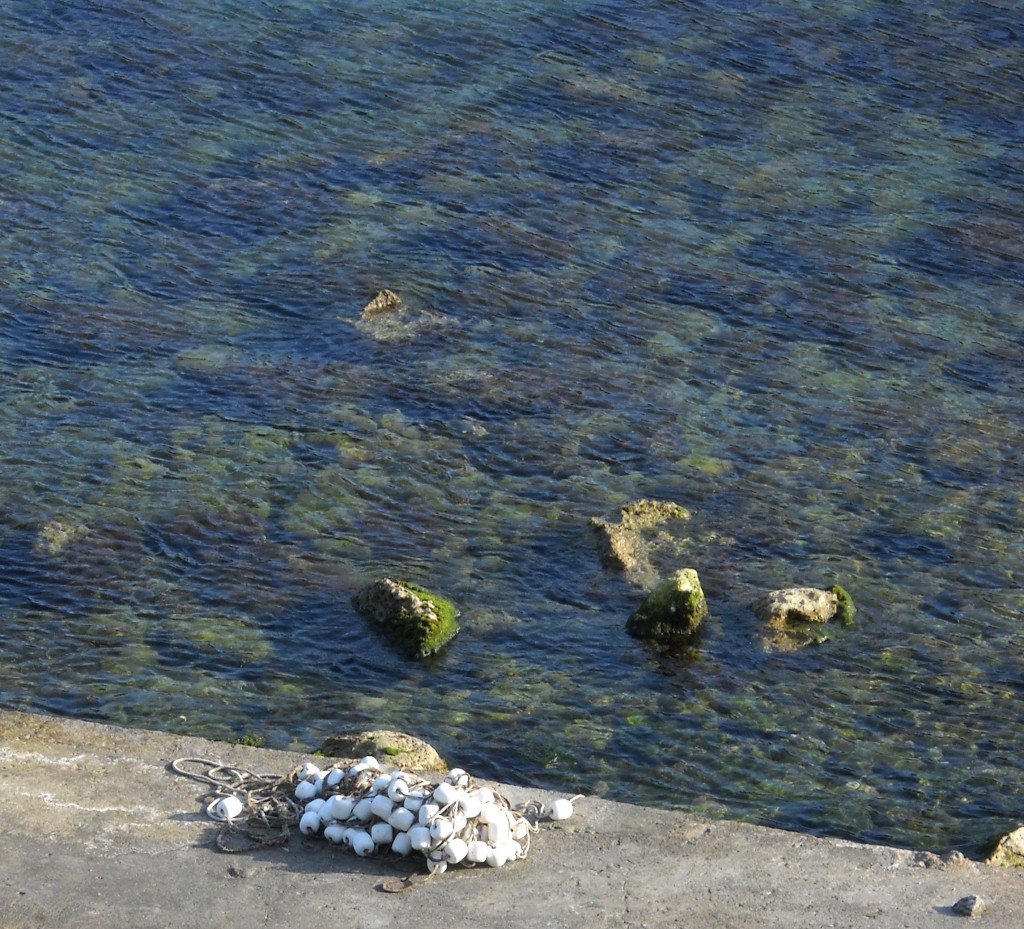
It was one of those amazing spring mornings where everything seems fresh, clean and so alive. I breathed deeply and felt peaceful and happy. While I had loved Bosnia more than I ever thought possible, I confess it did my heart good to leave the cross-covered hillsides and bullet-riddled buildings and spend some time near Dubrovnik, soaking up the serene views of red-tiled roofs, bright blue sea and citrus trees laden with fruit.
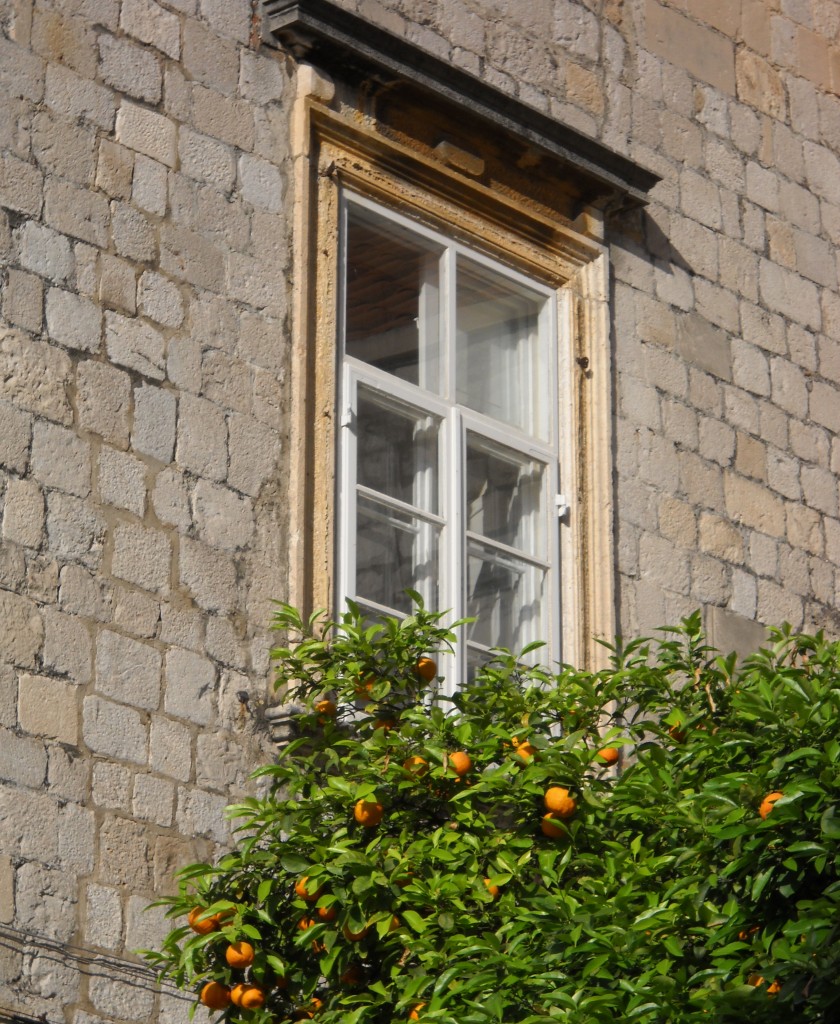
Although our breakfast that morning was eaten while we strolled cobbled streets, a perfect sit-down breakfast would’ve been Hrvatske Palacinke, Croatian Crepes. I love these little beauties! The crepe itself is traditionally made with all white flour, but I like more substance to mine so I made them with half white/half whole wheat and they turned out marvelously! Each crepe is filled with a sweetened cottage cheese, rolled up, brushed with sour cream and baked for 20 minutes. They are usually served with Lekvar, a thick jam or fruit butter, but I had the most lovely Lapin Cherries on hand, so I piled those on instead. Wonderful. The crepes are sweet but hearty and the cottage cheese filling is delectably creamy against the tart, juicy cherries.
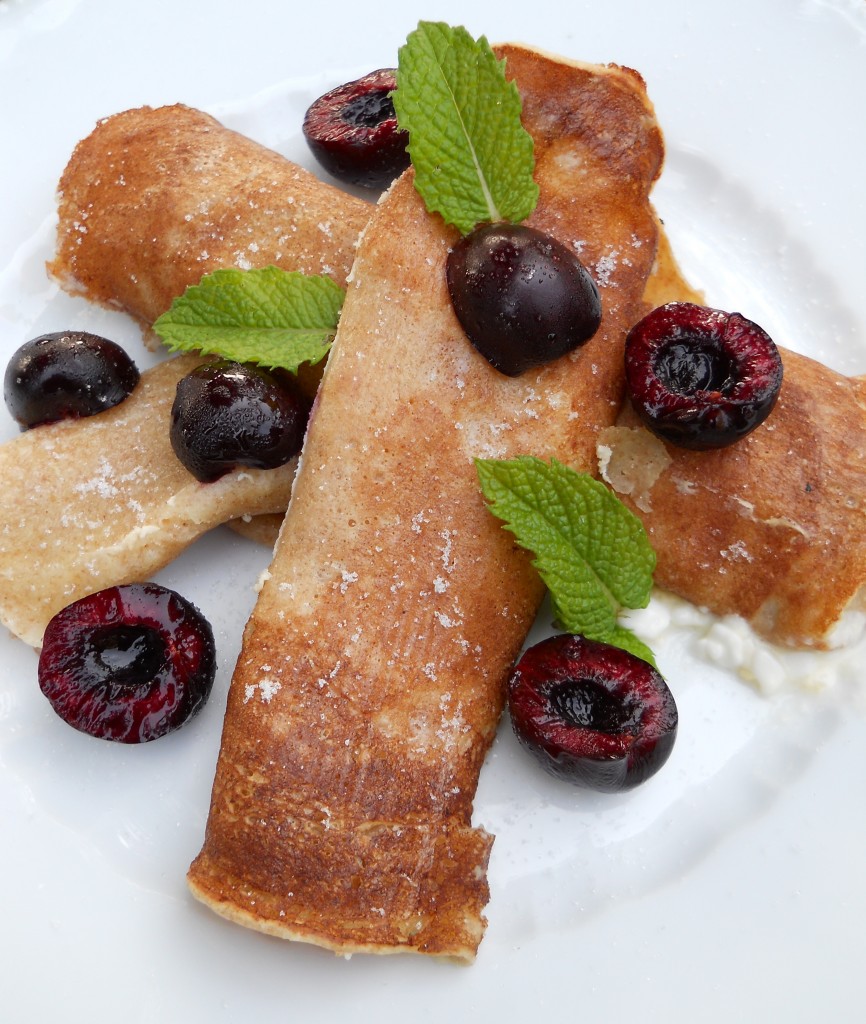
Next time I will take you to Old Town Dubrovnik.
If you could spend a fine spring morning anywhere in the world, where would you go?
(Before I go, I just found out that my new guest post is up at TheTravelBelles!! If you’re interested in photos and descriptions from a morning in Greece, pop on over for a visit and let me know what you think of the Convent of Vlachernas)
This is my contribution to Wanderfood Wednesday at Wanderlust and Lipstick.
Hrvatske Palacinke
Ingredients:
1 1/4 c. milk
1/4 cup butter
1/2 cup white flour
1/2 cup whole wheat flour
1 tsp. baking powder
1/2 tsp. salt
2 eggs, beaten
1/4 cup sugar
Cheese Filling:
1 tub cottage cheese
1 egg
1-2 Tbsp Agave or 1/4 cup sugar
Directions:
- Preheat oven to 350 F.
- Warm butter and milk in pan, set aside to cool.
- In separate bowl combine flour, baking powder, sugar and salt.
- Add milk mixture and eggs and beat until smooth.
- Chill batter overnight.
- In separate bowl mix cottage cheese, egg and sweetener. Chill until ready to cook.
- When ready to cook, grease frying pan with a bit of bacon grease.
- Pour 1-2 tablespoons batter and smooth with bottom of 1/4 cup measuring cup to make a thin pancake.
- Turn when golden brown.
- Place 1 tablespoon cottage cheese mixture in center of each crepe and roll.
- Lightly grease baking dish, place palacinke side by side and brush tops with sour cream.
- Bake for 20 minutes. Serve warm.

by Krista | Jul 20, 2010 | Spring
It was our last night in Bosnia as we ascended the hills above Mostar and drove along the coast toward Croatia.
The sea was smooth and gray like polished steel, and the sky glowed softly in gentle, velvety colors. The dramatic scene seemed the perfect way to leave this country that had so surprised, gutted and thrilled me. I didn’t want to leave but other countries, stories and adventures beckoned me on, so I left, carrying a heart full of memories and a camera full of pictures.
After the devastating conflict that left communities shattered, families torn apart, and thousands of people struggling to rebuild their lives, a new national anthem for Bosnia Hercegovina was adopted on June 25, 1999.
It had a melody but no words, for no words could be agreed upon.
For ten years there was only a tune but finally, in February 2009, the national parliament settled on lyrics. I found several translations that differ slightly in everything but the last few lines. To me they are the most important:
“We go into the future together!”
How I wish that for Bosnia. May it continue to grow into a place of peace, healing, and much hope.
